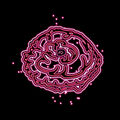Template:Selected anniversaries/August 13: Difference between revisions
No edit summary |
No edit summary |
||
| Line 37: | Line 37: | ||
||1898: Carl Gustav Witt discovers 433 Eros, the first near-Earth asteroid to be found. Pic. | ||1898: Carl Gustav Witt discovers 433 Eros, the first near-Earth asteroid to be found. Pic. | ||
File:George Gabriel Stokes.jpg|link=Sir George Stokes, 1st Baronet (nonfiction)|1903: Physicist and mathematician [[Sir George Stokes, 1st Baronet (nonfiction)|Sir George Stokes, 1st Baronet]] born. He will make seminal contributions to fluid dynamics (including the Navier–Stokes equations) and to physical optics. | File:George Gabriel Stokes.jpg|link=Sir George Stokes, 1st Baronet (nonfiction)|1903: Physicist and mathematician [[Sir George Stokes, 1st Baronet (nonfiction)|Sir George Stokes, 1st Baronet]] born. He will make seminal contributions to fluid dynamics (including the Navier–Stokes equations) and to physical optics. | ||
Revision as of 11:17, 21 May 2019
1625: Physician, mathematician, and physicist Rasmus Bartholin born. He will discover the double refraction of a light ray by Iceland spar, publishing an accurate description of the phenomenon in 1669.
1863: Artist Eugène Delacroix dies. His use of expressive brushstrokes and his study of the optical effects of color will shape the work of the Impressionists.
1903: Physicist and mathematician Sir George Stokes, 1st Baronet born. He will make seminal contributions to fluid dynamics (including the Navier–Stokes equations) and to physical optics.
1941: Film director and arms dealer Egon Rhodomunde raises money for new film by selling shares in the Manhattan Project.
1942: Major General Eugene Reybold of the U.S. Army Corps of Engineers authorizes the construction of facilities that would house the "Development of Substitute Materials" project, better known as the Manhattan Project.
2019: Steganographic analysis of Crimson Blossom 2 reveals "five hundred and twelve kilobytes" of previously unknown Gnomon algorithm functions.





